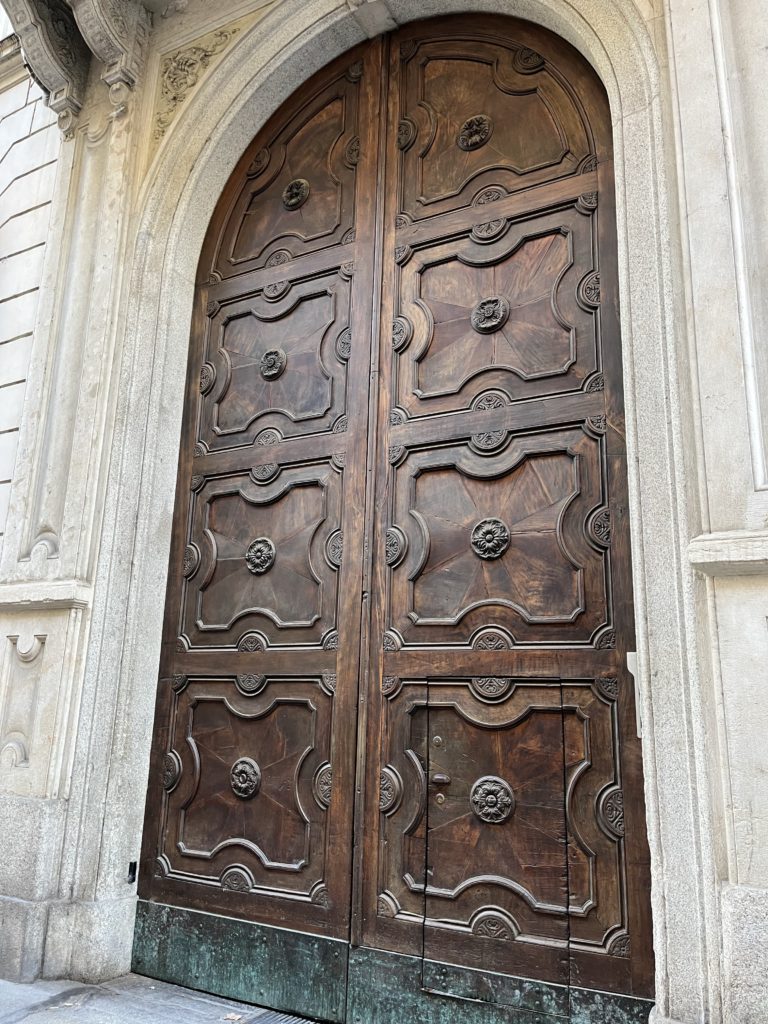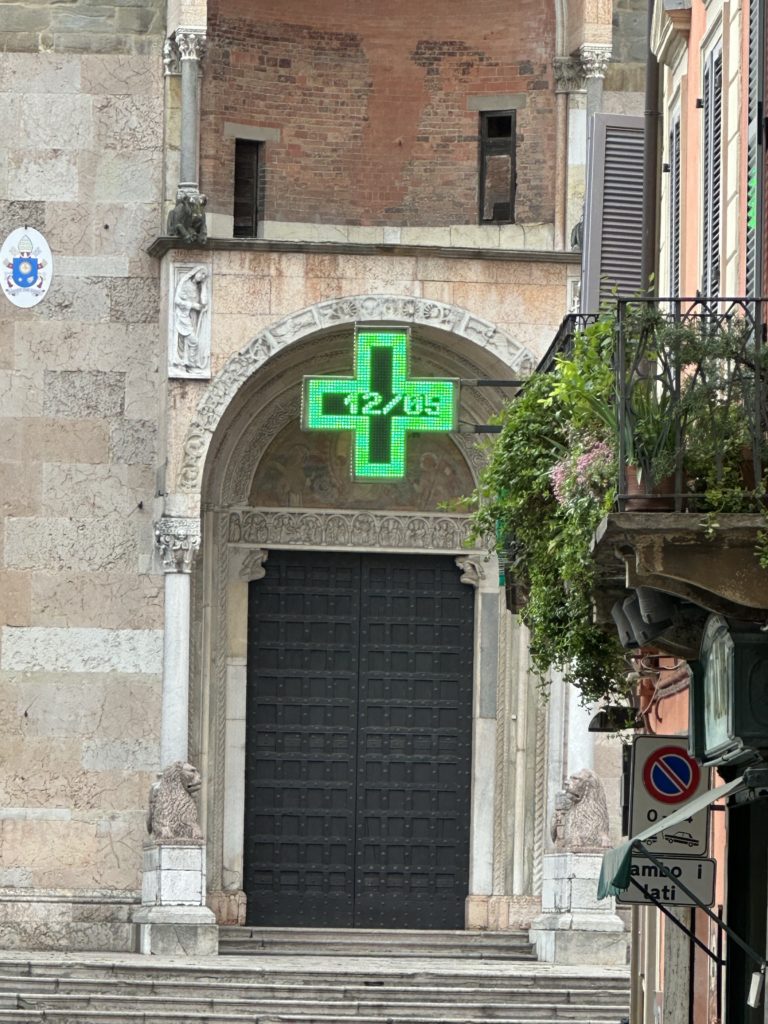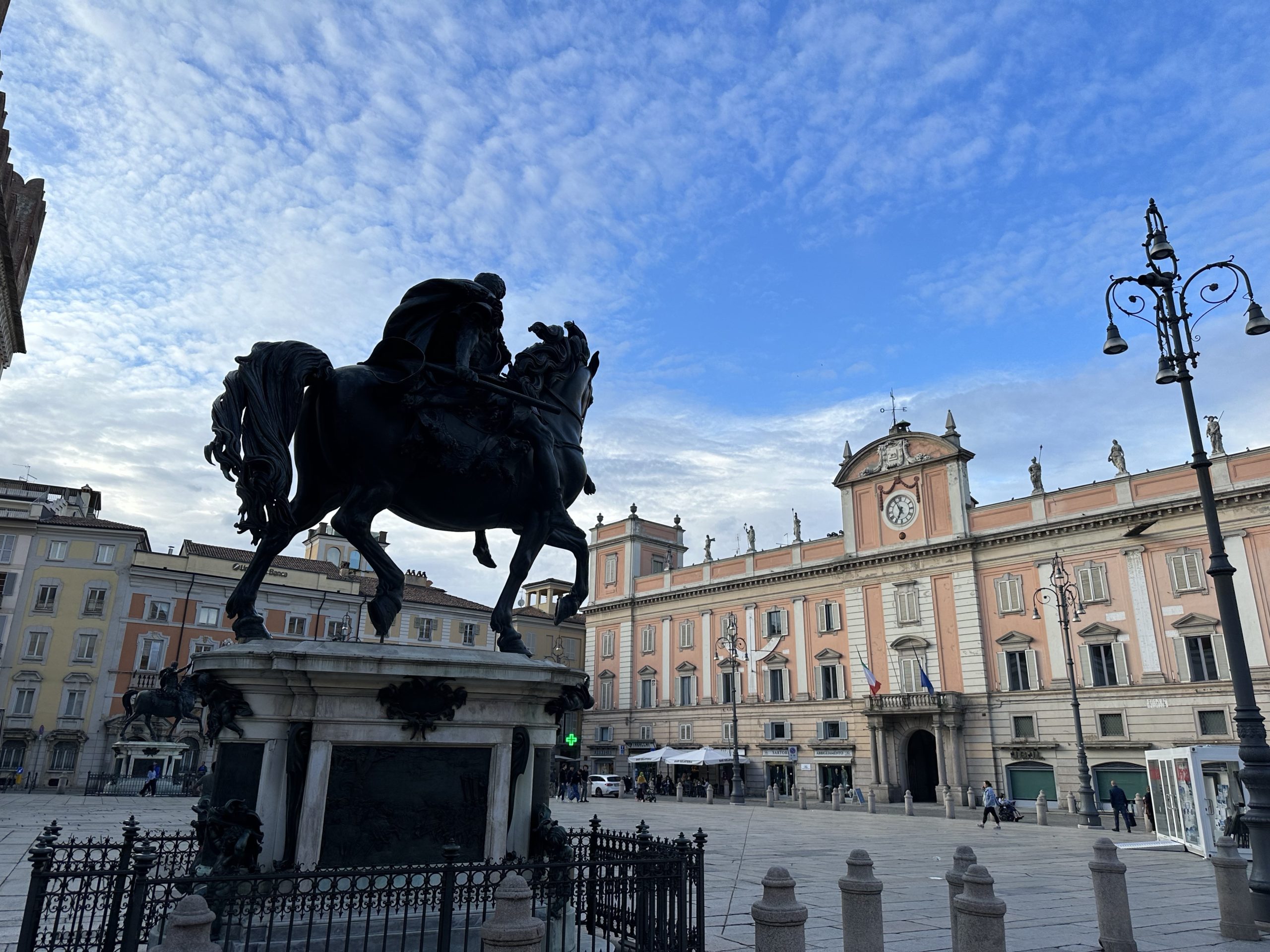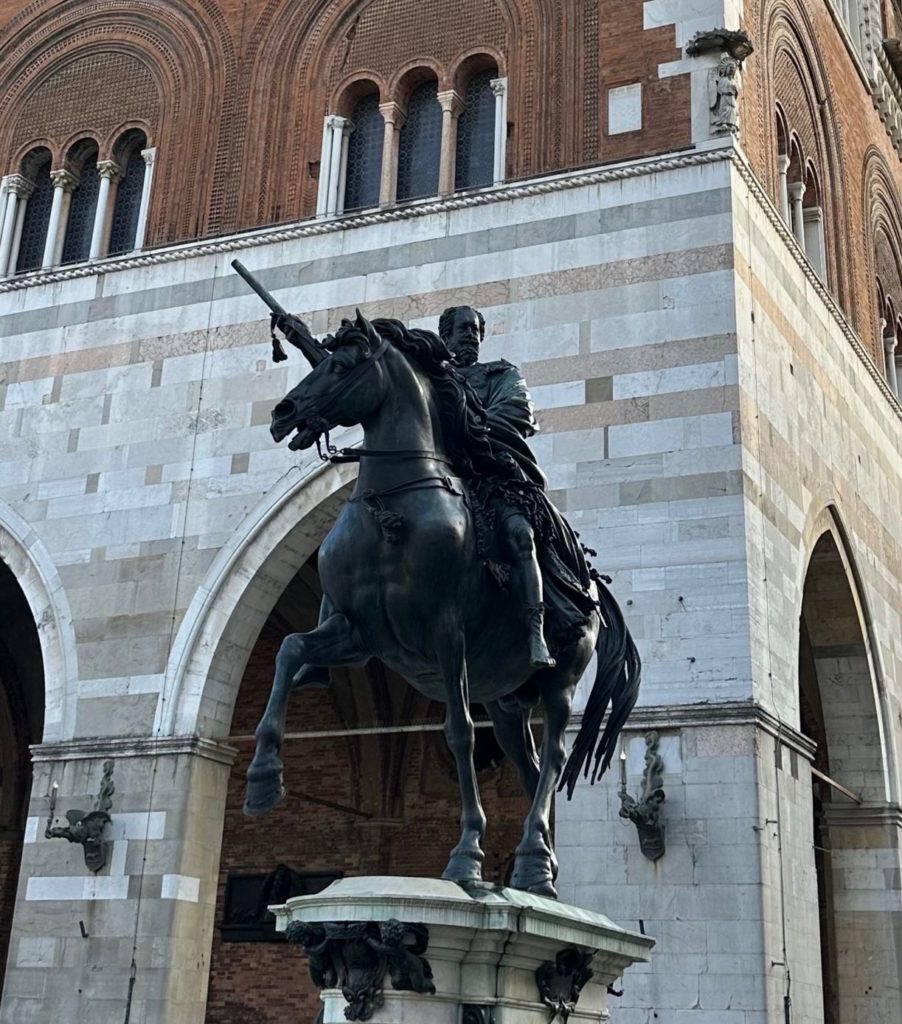Pavia to Pontremoli via Piacenza
We booked with The Natural Adventure company to support us through the Apennines. As the first date available with them is May 17, we will walk ahead on the route, ie, between Pontremoli and Lucca, and return to do the stages between Fidenza and Pontremoli.
We stopped in Piacenza, only because we had booked accommodation before we had changed our plans. But, it was also an interesting city. The Cicerone guide succinctly describes its history:
“Though captured and destroyed many times in its first centuries, Piacenza always recovered and its rich agricultural roots helped it become one of the most prosperous cities in Europe in the Middle Ages. In the 17th c. one-third of its residents died from famine and plague and in 1802 Napoleon annexed Piacenza and carried many of its artworks away to French museums. Piacenza was heavily bombed by the Allies in WWII to slow the German retreat. Rail lines, industrial areas and bridges were targets, but the center suffered collateral damage.”
Our apartment in the Centro Historico was old, richly decorated and voluminous. On a closer look, the electrical wiring was also very dated! There was also no sign of heating, despite the 12C temperature.
On our way to the train station Friday morning, we stopped for breakfast (coffee and croissants) at a great bar/cafe, Pisarei e Fa… Blues. The walls were covered with written notes from customers and artists, including Canadian blues singer, Layla Zoe. Great music played in the background.





During a brief wait between trains in Parma, we went across the road to the Cafe Stazione and had an especially good coffee, 9/10 on the Gully scale. (We can get a good espresso anywhere in Italy and we would rate them all above 8/10.)
Changing to a bus in Berceto, it started to tip down with rain. As the bus sped along the autostrada, we looked out at the Appenines, shrouded in mist, and (Lois) wondered how those walks will go. At Pontremoli, we quickly headed to our AirBnB.
It had cleared up when we went out exploring later. First stop would have been the Church of San Pietro, where, in the modern building, there is a small sandstone labyrinth from the 12thC on a piece of wall remaining after the original church was damaged in 1944. Unfortunately, we discovered that the church is only open on Sundays.
The medieval village of Pontremoli, believed to have been first settled around 1000 BC., lies in the heart of Lunigiana, a mountainous area stretching from the Tosco-Emiliano Appenines to the Mediterranean Sea following the Magra River. While a part of Northern Tuscany, the village of dark stone and narrow alleys appears to be relatively untouched by tourism.
The town may get its name from the phrase “Ponte tremulus”, because of a bridge with a shaky constitution that spanned the river Magra, a bridge that already existed when Henry VI reigned around the year 1165. There are several bridges across the Magra and Verde Rivers which join at the south end of the city. One bridge, the Ponte della Cresa, spans the river Verde with four stone arches. Originally built of wood, this bridge dates back to the 1300’s, although rebuilt many times due to continuous damage by floods and sieges.
We wandered through the town, stopped for gelato, and then took an elevator up to the Castello del Piagnaro, a medieval castle designed to guard the main roads leading through the Apennine Mountains to Rome. While the castle itself was interesting, we were intrigued to find that it now houses the Museo delle Statue Stele Lunigianese. This is a fascinating collection of stele statues dating back to the European Neolithic era. The sandstone figures representing stylized male and female human figures have been discovered all over Lunigiania, this part of Tuscany, but primarily in the area south of Pontremolli.













